The following article discusses racist language within a historical context. It includes direct examples of offensive terms, necessary for an honest exploration of the subject matter. Reader discretion is advised.
| Original Text from “The Rats in the Walls” (1924) | Altered Text from “The Rats in the Walls” (Zest 1956) |
|---|---|
| “As I have said, I moved in on July 16, 1923. My household consisted of seven servants and nine cats, of which latter species I am particularly fond. My eldest cat, “Nigger-Man”, was seven years old and had come with me from my home in Bolton, Massachusetts; the others I had accumulated whilst living with Capt. Norrys’ family during the restoration of the priory.” | “I moved in on July 16, 1953. My household consisted of seven servants and nine cats, of which latter species I am particularly fond. My eldest cat, Black Tom, was seven years old and had come with me from my home in Bolton, Massachusetts; the others I had accumulated while living with Capt Norrys’ family during the restoration of the priory.” |
In 1956, Zest: The Magazine for Men, a new publication aimed at a male audience, released its first issue. Joining a market filled with men’s magazines ranging from the sophisticated Playboy to adventure pulps like Cavalier, Zest sought to offer a broad spectrum of “adult entertainment.” This included everything from explicit articles on sexual topics to sensational stories of wartime escapes. Within this diverse content mix, reprinting a horror story by H.P. Lovecraft was not entirely unexpected. Zest promoted “The Rats in the Walls” on its cover as “The greatest horror story ever told!” and credited the copyright to H.P. Lovecraft, who had been deceased for nearly two decades. Arkham House, then managing Lovecraft’s literary estate, likely approved the reprint for a fee.
However, the 1956 Zest version of “The Rats in the Walls” is notable not just for its publication in a men’s magazine, but for the editorial changes it underwent. Originally set in 1923, the year of its writing, and referencing the aftermath of World War I, the Zest edition shifted the setting to 1953, post-World War II. The story was also shortened, with Lovecraft’s descriptive prose trimmed to fit the magazine’s three-column layout. Most significantly, the name of the protagonist’s cat was changed from the deeply offensive “Nigger-Man” to the more neutral “Black Tom.”
While H.P. Lovecraft is often labeled as racist, much of this reputation stems from his personal letters rather than his published fiction. In his stories, Lovecraft used the racial slur “nigger” sparingly – approximately 31 times across five tales, with 19 instances appearing in “The Rats in the Walls.” These instances are distributed across “The Rats in the Walls” (19), “Medusa’s Coil” (6), “Winged Death” (3), “Through the Gates of the Silver Key” (2), and “The Picture in the House” (1). He occasionally employed similar terms like “Nig” for the black cat in The Case of Charles Dexter Ward, and “darky” in “Medusa’s Coil.” The crucial question isn’t simply how often Lovecraft used these terms, but why and how. Often, these slurs are voiced by characters explicitly depicted as racist, serving to highlight their prejudiced nature. Lovecraft utilized such language as a tool to establish character flaws.
However, in “The Rats in the Walls” and The Case of Charles Dexter Ward, the context of the cat names “Nig” and “Nigger-Man” is different. These names are direct references to black cats, rooted in Lovecraft’s personal life, rather than serving as mere characterization devices to denote racism. As Lovecraft himself stated in a letter to Edwin Baird in 1924:
I can assure you that Nigger-Man is (or was, alas!) a glorious and purring reality!
This reveals that “Nigger-Man” (or “Nig”) was the actual name of Lovecraft’s childhood pet, a black cat adopted by his family. The earliest known reference to “Nig” appears in a letter from Lovecraft’s grandfather, Whipple Phillips, to a young HPL in 1895. Whether young Lovecraft or an adult named the cat remains unknown. Regardless, the adults in his family evidently accepted the name, which, shockingly, was not uncommon for black animals at the time. Even the cat aboard the Terra Nova during Robert Falcon Scott’s Antarctic expedition (1910-1913) bore the same offensive name. While the exact timeline of its decline as a pet name in the U.S. is unclear, anecdotal evidence suggests this shift occurred after World War II.
Later in life, Lovecraft continued to use similar names for black cats, as evidenced in a letter to Duane W. Rimel in 1934, where he describes addressing a black cat named Sam Perkins:
When I speak to little Sam I call him all sorts of things—“Little Black Devil”, “Old Nigger Man”, “Spawn of the Shadows”, “Little Piece of the Night”, “Old Black Panther”, “Little Onyx Sphinx”, “Child of Bast”, & so on, & so on ….. Not excluding the succinct & universal “kittie”!
The disappearance of his childhood cat in 1904 coincided with a tumultuous period for Lovecraft, marked by his grandfather’s death and the family’s subsequent financial decline. This loss forced Lovecraft and his mother to move to smaller lodgings, initiating their descent into genteel poverty. Lovecraft never owned another pet cat but cherished neighborhood cats and fondly remembered his childhood companion.
Edwin Baird, who initially published “The Rats in the Walls” in Weird Tales, had previously printed stories containing the racial slur. The use of this term as a name for black pets was prevalent enough during that era to be considered almost commonplace. Baird likely didn’t hesitate to publish “The Rats in the Walls” in 1924 with the original cat name. Similarly, Farnsworth Wright, Baird’s successor at Weird Tales, maintained the name when he reprinted the story in 1930. However, by 1956, attitudes had shifted, and the editor at Zest deemed the original name unacceptable, leading to its systematic replacement throughout the text.
This editorial decision by Zest marked a turning point, but in the broader context of Lovecraft’s textual history, it remains an isolated incident. The Zest version of “The Rats in the Walls” is largely disregarded, rarely reprinted, and considered more of a collector’s item than a significant text by scholars and readers. Arkham House, in its numerous reprints of “The Rats in the Walls,” never altered the cat’s name. Even when another men’s magazine, Sensation, reprinted a heavily edited version of the story three years later, the cat’s original name was retained. The primary textual lineage of “The Rats in the Walls” preserved the controversial name, even as societal views on its acceptability evolved.
Before 1971, Arkham House’s firm control over Lovecraft’s copyrights and licensing prevented changes to his texts. However, after August Derleth’s death in 1971, their authority diminished. Simultaneously, a “pure text” movement gained momentum among Lovecraft fans and scholars. This movement advocated for reading Lovecraft’s original works, “warts and all,” free from editorial alterations. A notable example of prior editorial interference is the original ending of “Medusa’s Coil” (1939), co-authored by Zealia Bishop and H.P. Lovecraft, where Lovecraft’s phrase “a Negress” was changed to the euphemistic “a loathsome, bestial thing, and her forebears had come from Africa.”
In adaptations and translations, however, English-language editorial influence is lessened, and varied interpretations arise. Maria Luisa Bonfanti’s Italian translation renamed the cat Moro (“Moor”), while Jacques Papy’s French translation used Négrillon (“Pickaninny”). Bob Jennings’ comic adaptation in Creepy #10 (1968) changed the name to Salem. Richard Corben’s 1972 comic in Skull Comix #5 kept a similar name, Nigaman. Vicente Navarro and Adolfo Usero’s 2013 Spanish comic used Negro (“Black”), and Horacio Lalia’s 2000 French comic, Le Manuscrit oublié, opted for “Blakie” or “Blackie.” Dan Lockwood’s The Lovecraft Anthology Vol. 1 (2011) simply omitted the cat’s name altogether. These diverse approaches, sometimes further complicated by translations of these adaptations, illustrate a broader point: some translators and adaptors aim to preserve the essence of the original name, while others deliberately avoid or circumvent the issue.
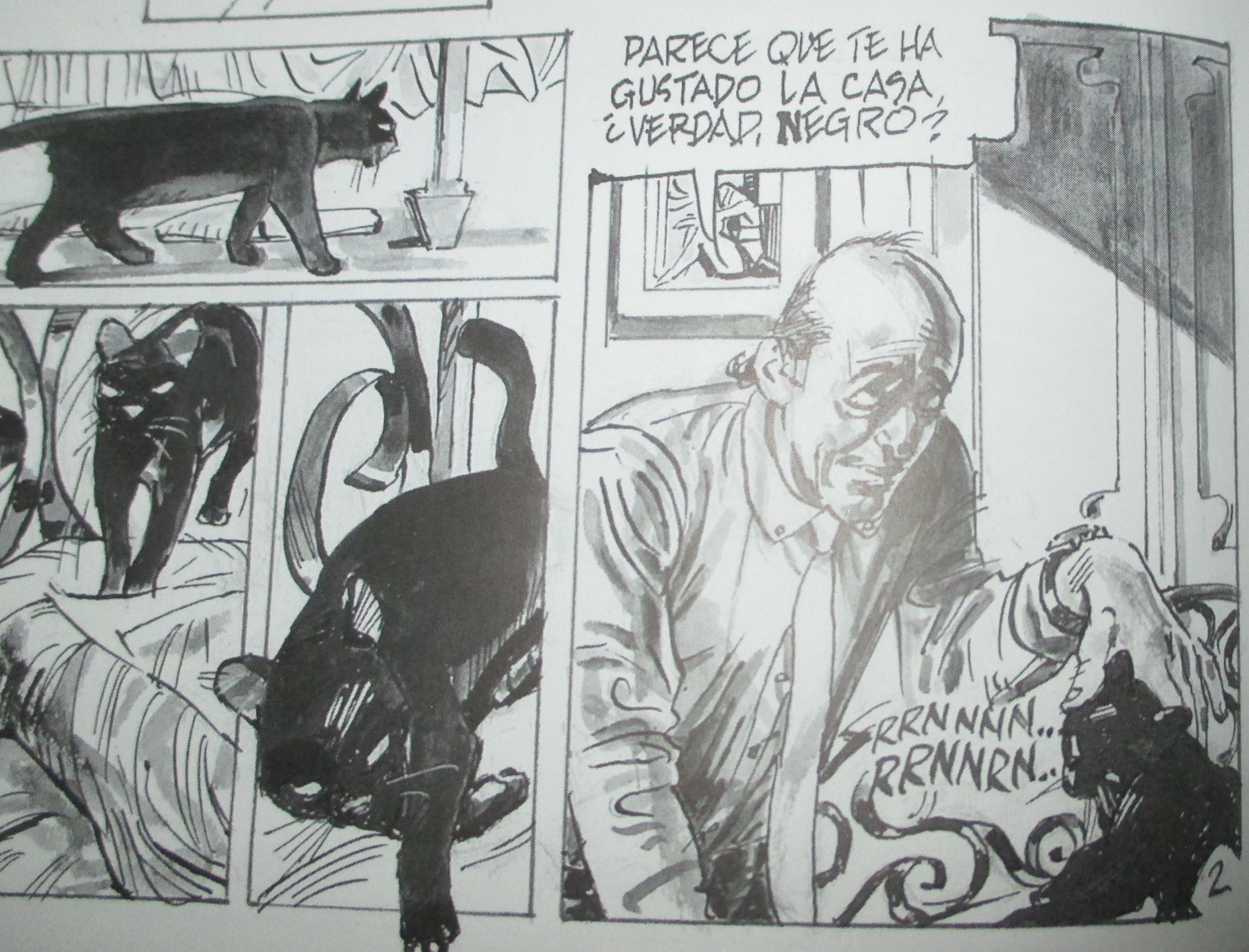 Navarro & Usero's comic adaptation of "The Rats in the Walls", featuring the cat named Negro.
Navarro & Usero's comic adaptation of "The Rats in the Walls", featuring the cat named Negro.
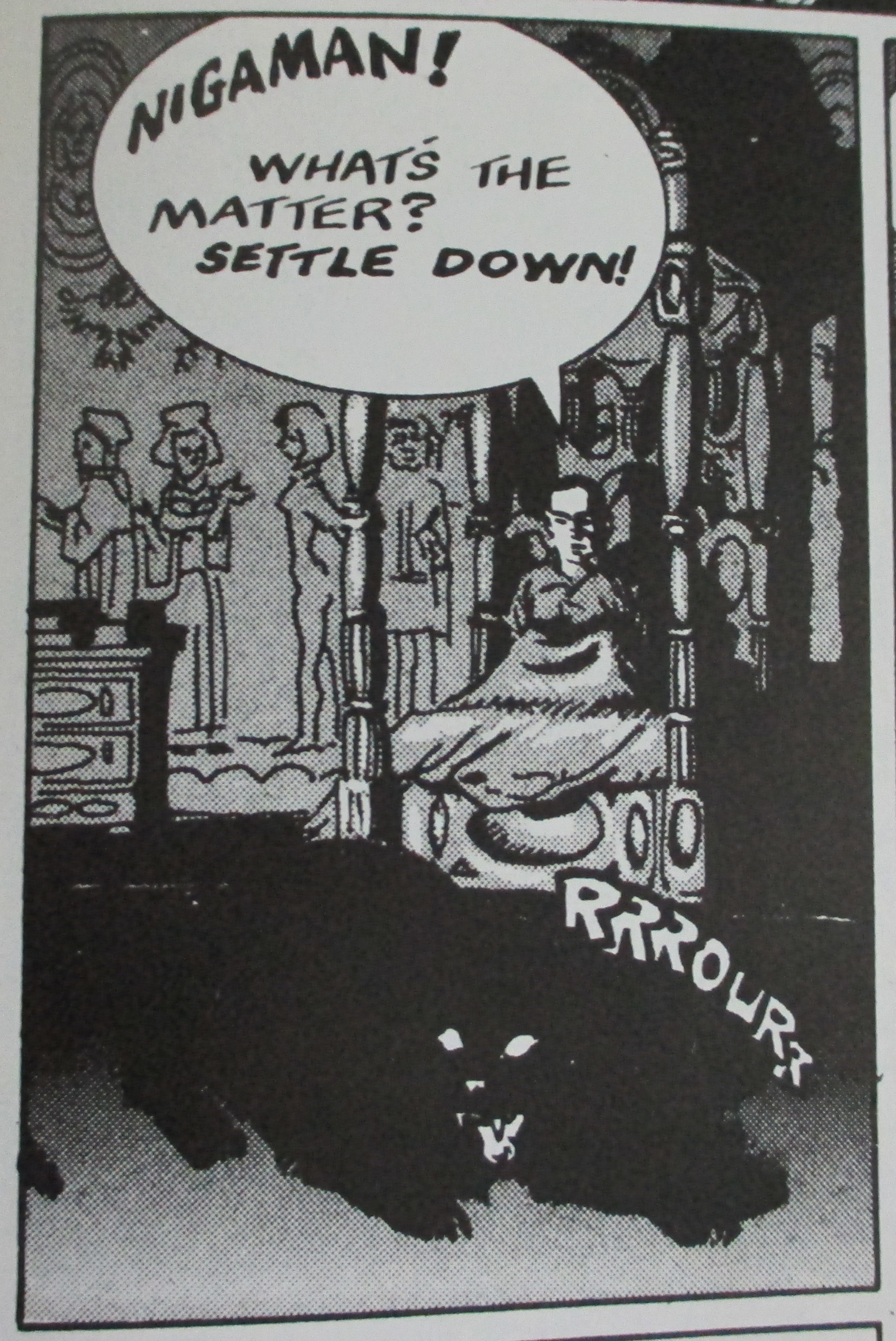 Richard Corben's comic adaptation of "The Rats in the Walls", featuring the cat named Nigaman.
Richard Corben's comic adaptation of "The Rats in the Walls", featuring the cat named Nigaman.
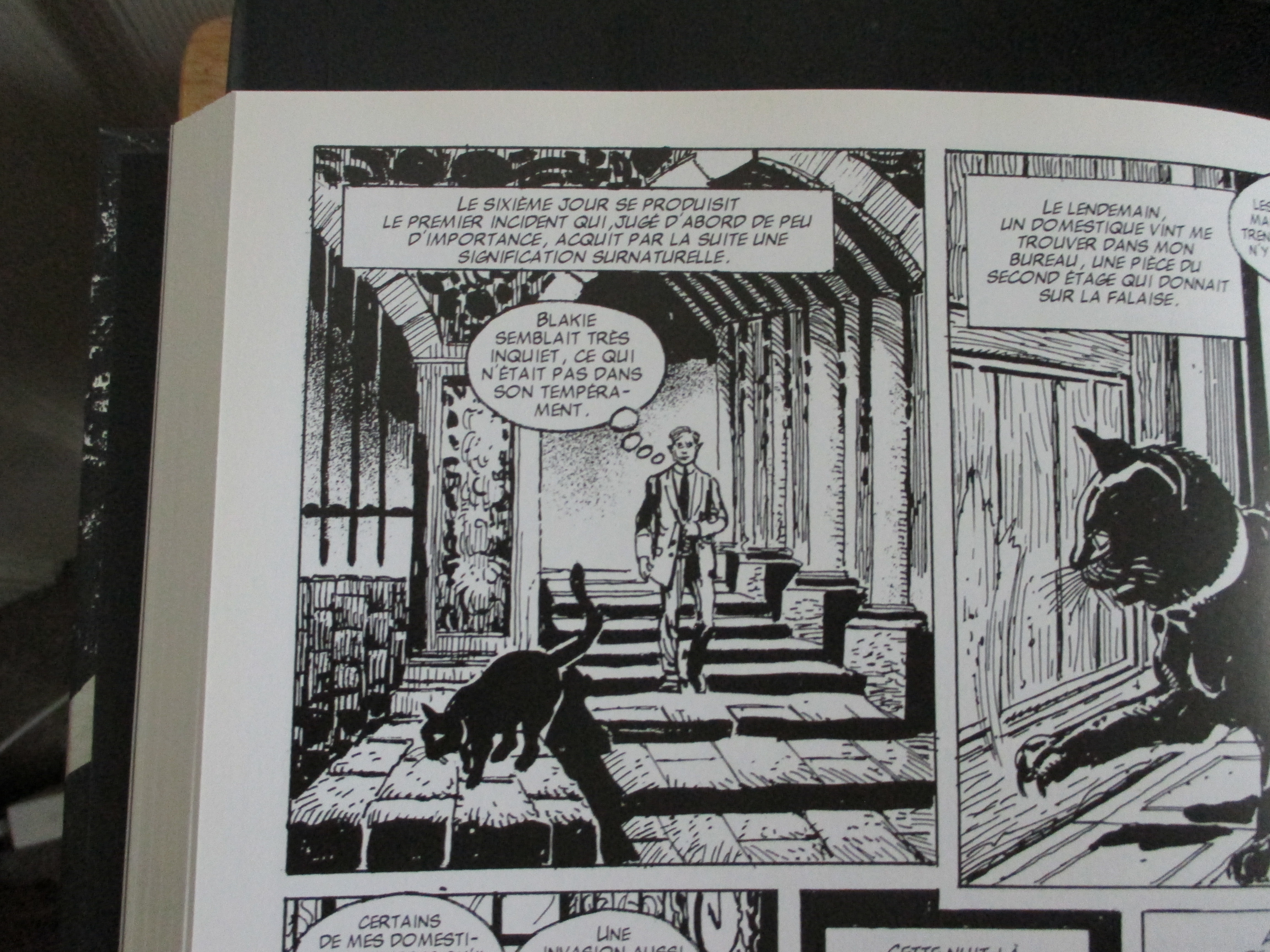 Horacio Lalia's comic adaptation of "The Rats in the Walls", featuring the cat named Blakie.
Horacio Lalia's comic adaptation of "The Rats in the Walls", featuring the cat named Blakie.
This inconsistent handling of Lovecraft’s material is understandable because, within the narrative itself, the cat’s name holds no particular significance beyond Lovecraft’s personal connection. The cat’s narrative function is unaffected by whether it has a proper name at all. Adaptations and translations that retain the original name or a close approximation likely do so out of a commitment to textual fidelity, aiming for maximum faithfulness to Lovecraft’s original story.
However, for some, this textual fidelity is problematic. For example, “The Rats in the Walls” was excluded from a collection of Lovecraft’s Gothic tales. The stated rationale was:
[…] some of his most famous Gothic stories, such as ‘Herbert West—Reanimator’ (1922) and ‘The Rats in the Walls’ (1924), are disfigured by casual racist remarks or allusions that make contemporary reprintings problematic.*
*It is broadly acknowledged, even by his fas, that Lovecraft espoused racist views in his writing; and there are references in this collection which readers are likely to find offensive. Their inclusion in this edition in no way implies endorsement by the editor or publisher.
Xavier Aldana Reyes, introduction to The Gothic Tales of H. P. Lovecraft (2018) xi
In this context, “problematic” signifies “potentially offensive to a modern audience,” not an actual impediment to reprinting, given “The Rats in the Walls” is one of Lovecraft’s most frequently reprinted stories and is now in the public domain. Recent debates have emerged regarding the censorship or sanitization of works by deceased authors like Roald Dahl, Ian Fleming, and Agatha Christie. Each case presents unique nuances. Christie, for instance, authorized changes to some of her works during her lifetime, most notably the title change of And Then There Were None from the deeply offensive original title Ten Little Niggers.
These authors share literary longevity and were born into a world where racism, antisemitism, and sexism were more overt and accepted. These biases inevitably influenced their work. Unlike many of their contemporaries, their works remain in print and continue to attract new readers. While these authors are long deceased, their literary estates are still marketable. Editors who sanitize or erase historical racism are not fulfilling the historian’s duty to accurately represent the past. However, they are primarily businesspeople seeking to maximize market appeal and cater to perceived audience desires.
As demonstrated by the Zest version of “The Rats in the Walls,” such sanitization efforts are often short-lived. While well-intentioned efforts to shield contemporary readers from historical racism, like Reyes’ decision to omit “The Rats in the Walls,” can be seen as acts of cowardice. To be responsible stewards of literary history and honest with the public, editors, publishers, scholars, and critics must address historical racism openly and honestly. When offensive language and themes appear, it’s crucial to explain their original context, Lovecraft’s usage, and how his contemporary audience would have understood them.
Reprinting Lovecraft’s “The Rats in the Walls” offers an educational opportunity to deepen readers’ understanding of both the story and Lovecraft himself. Removing the cat’s offensive name eliminates the chance to grapple with this problematic aspect of the text. Now that the story is in the public domain, adaptations and interpretations are free to diverge. While scholars and dedicated fans will likely continue to prioritize textual accuracy, those adapting the story for new audiences can make their own informed choices about what is appropriate for contemporary contexts – even to the point of creating new stories featuring “Black Tom.”
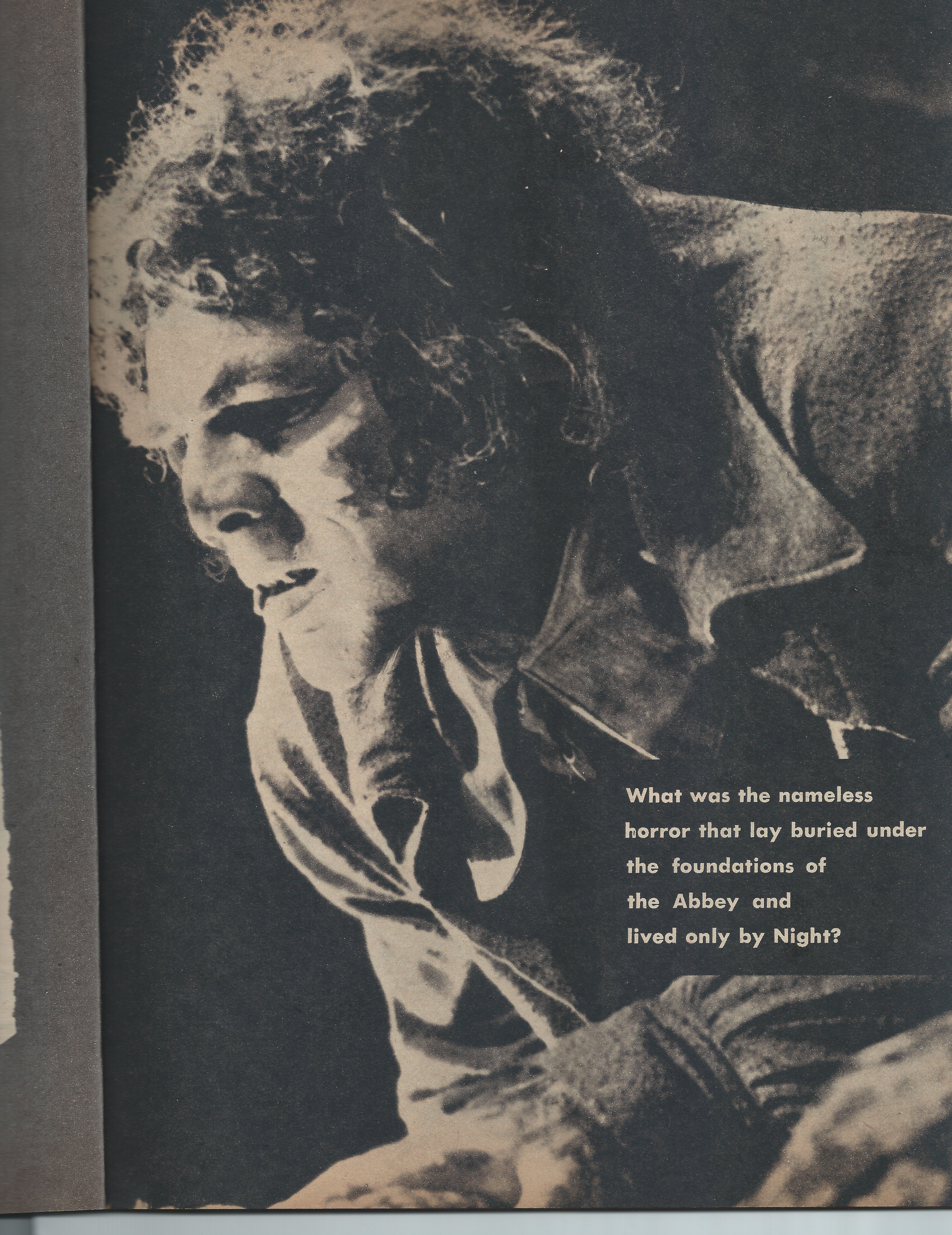 Scan of another page from *Zest* magazine showing the altered text of "The Rats in the Walls" where "Nigger-Man" is changed to "Black Tom".
Scan of another page from *Zest* magazine showing the altered text of "The Rats in the Walls" where "Nigger-Man" is changed to "Black Tom".
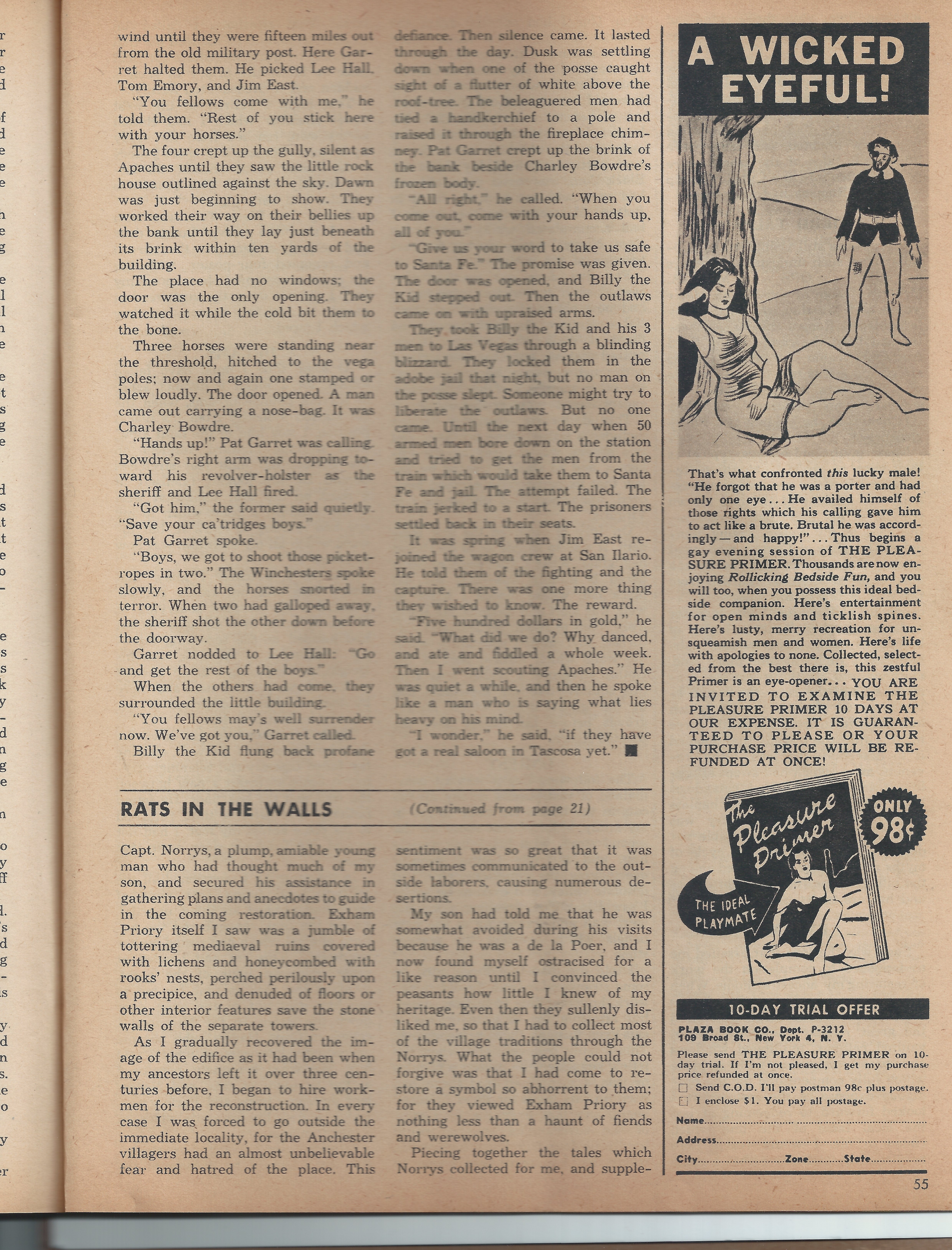 Scan of a page from *Zest* magazine showing the altered text of "The Rats in the Walls" where "Nigger-Man" is changed to "Black Tom".
Scan of a page from *Zest* magazine showing the altered text of "The Rats in the Walls" where "Nigger-Man" is changed to "Black Tom".
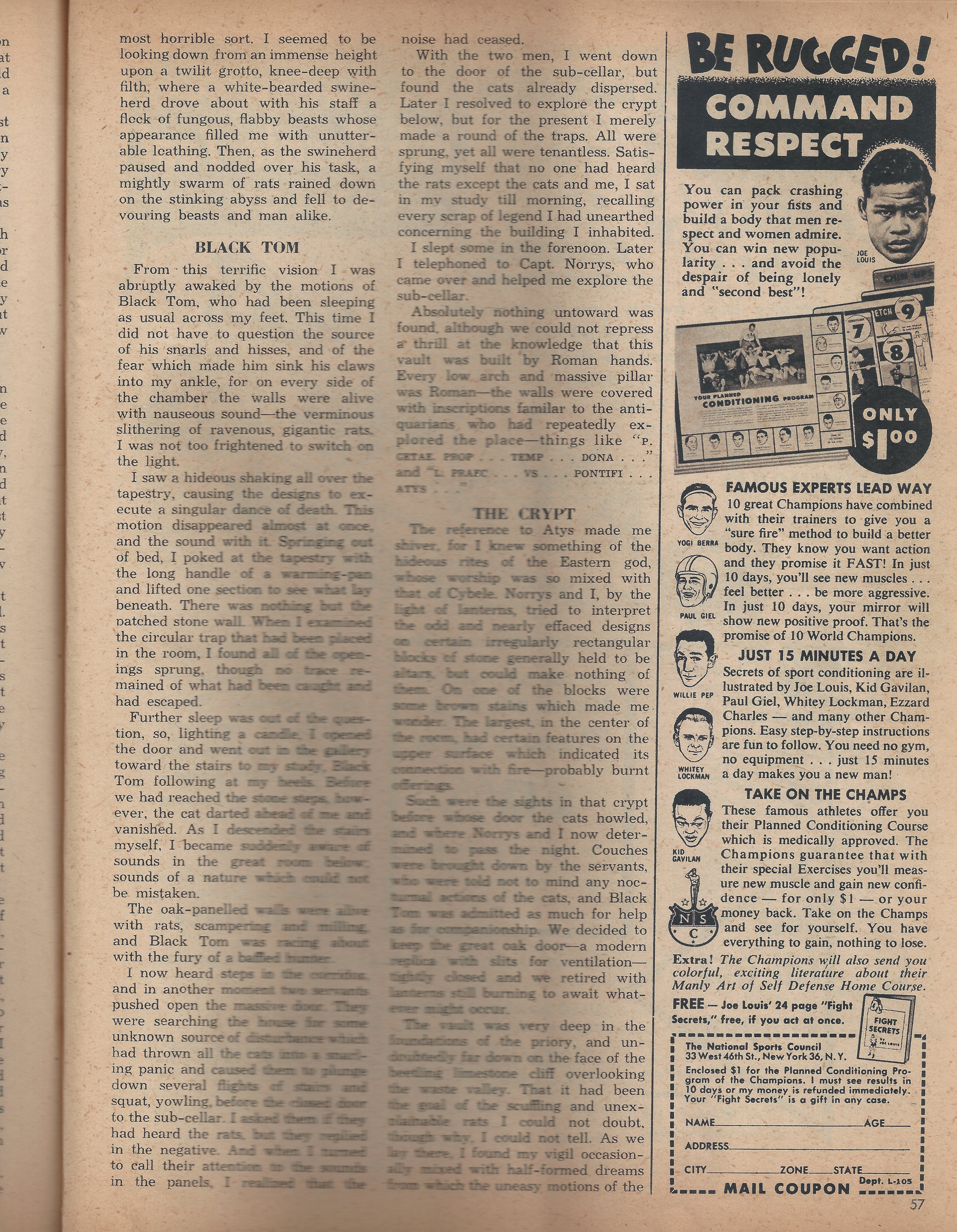 Scan of a page from *Zest* magazine showing the altered text of "The Rats in the Walls" where "Nigger-Man" is changed to "Black Tom".
Scan of a page from *Zest* magazine showing the altered text of "The Rats in the Walls" where "Nigger-Man" is changed to "Black Tom".
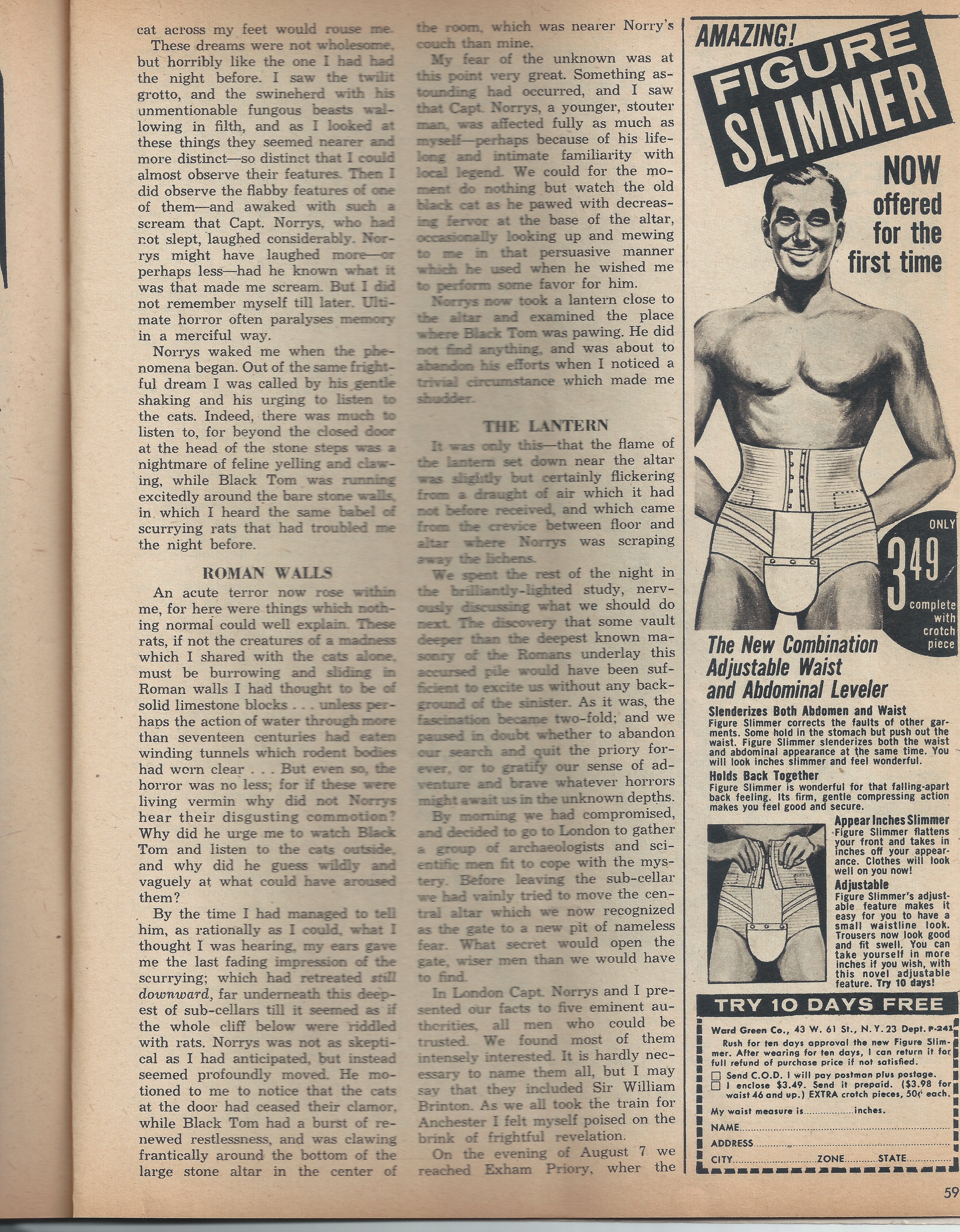 Scan of a page from *Zest* magazine showing the altered text of "The Rats in the Walls" where "Nigger-Man" is changed to "Black Tom".
Scan of a page from *Zest* magazine showing the altered text of "The Rats in the Walls" where "Nigger-Man" is changed to "Black Tom".
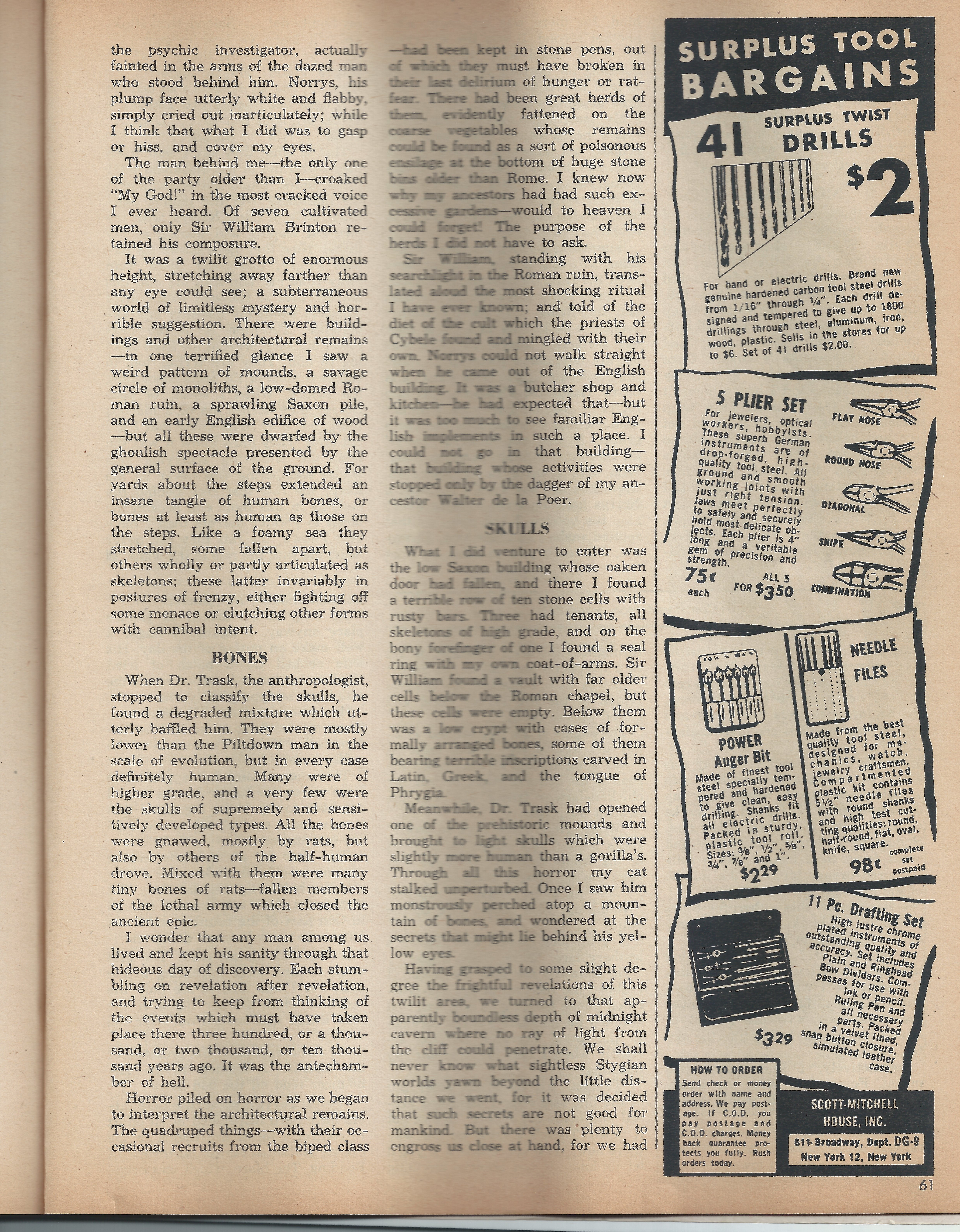 Scan of a page from *Zest* magazine showing the altered text of "The Rats in the Walls" where "Nigger-Man" is changed to "Black Tom".
Scan of a page from *Zest* magazine showing the altered text of "The Rats in the Walls" where "Nigger-Man" is changed to "Black Tom".
Bobby Derie is the author of Weird Talers: Essays on Robert E. Howard & Others (2019) and Sex and the Cthulhu Mythos (2014).
Deep Cuts in a Lovecraftian Vein uses Amazon Associate links. As an Amazon Associate I earn from qualifying purchases.
